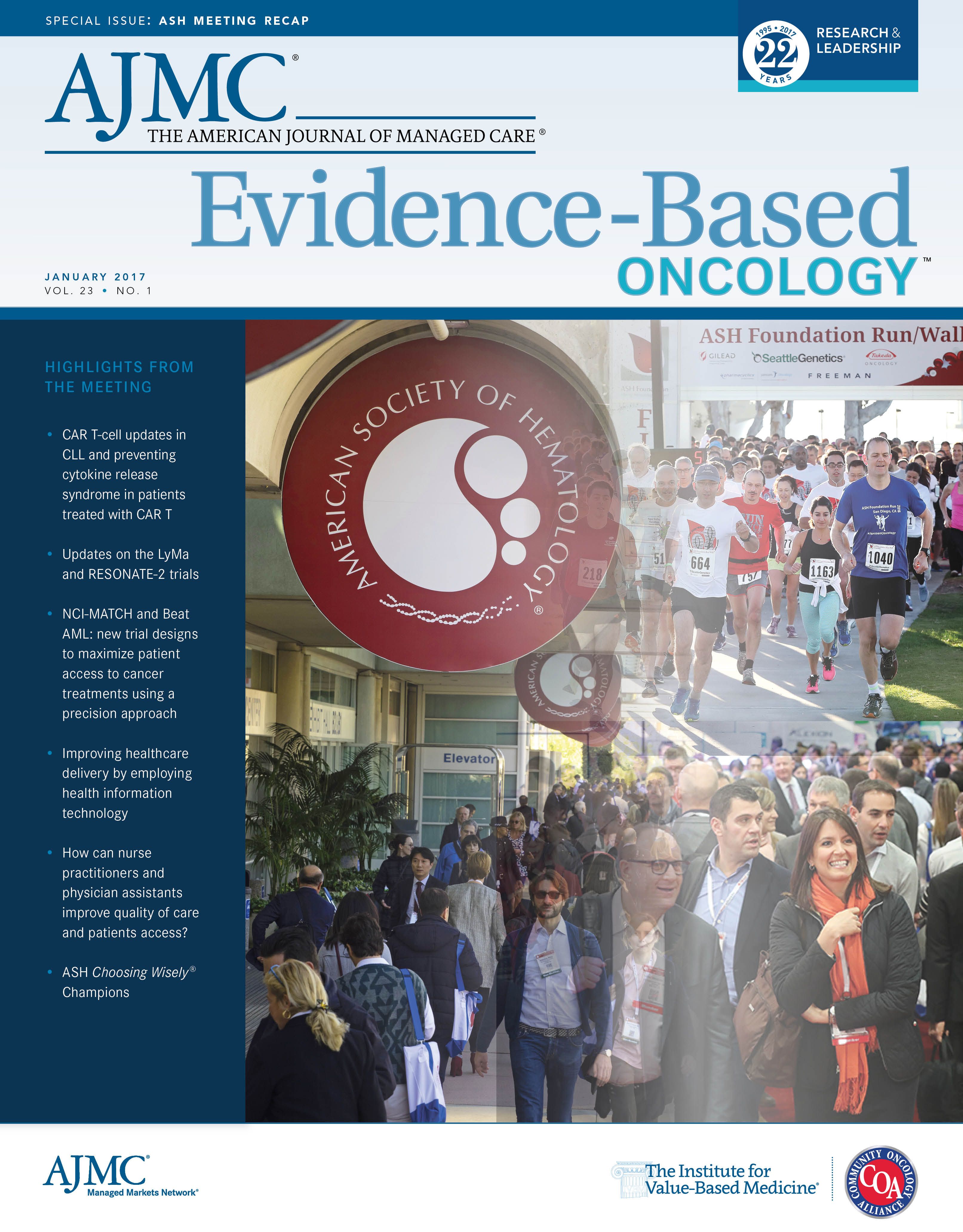- Center on Health Equity & Access
- Clinical
- Health Care Cost
- Health Care Delivery
- Insurance
- Policy
- Technology
- Value-Based Care
Model to Predict Disease Complexity and Costs Associated With AHCT in Acute Leukemia
Disease status, MUD/MRD donor, myeloablative conditioning regimen, GVHD prophylaxis other than tacrolimus/sirolimus, and Medicare and/or Medicaid as payer are significant predictors for cost of care in patient with acute leukemia who undergo allogenic hematopoietic cell transplant (AHCT).
“VALUE,” BY ITS TRADITIONAL DEFINITION
, is denoted as the ratio of outcomes over cost. With the transition across healthcare toward value-based payments, payers—both CMS and commercial payers—are experimenting with payment models that will yield the best healthcare outcomes at lower costs. For acute leukemia (AL), while risk-based survival outcomes have been reported for allogenic hematopoietic cell transplant (AHCT), associated financial risk has not been assessed.
A poster presented at the 58th Annual Meeting & Exposition of the American Society of Hematology reported on a risk-based cost analysis model in patients with AL that considered the impact of disease status, patient comorbidities, AHCT donor type, and other transplant-related factors on clinical and financial risks. The presenting author of the poster was Joseph C. Alvarnas, MD, Department of Hematology and Hematopoietic Cell Transplantation, City of Hope, Duarte, California. Alvarnas also serves as editor-in-chief of Evidence-Based Oncology™ (EBO™).
The study included data from multiple sources of electronic health records (EHRs) of patients with AL who underwent AHCT at City of Hope during a 4-year period between January 2010 and December 2014. Total direct costs were assessed for each patient from 14-days prior to 100-days post AHCT. The 389 patients included in the analysis had a median age of 52.5 years (range, 1-74 years) and just less than half (48%) were female. At the time of AHCT, 204 (52%) were in first complete remission (CR), 87 (22%) in first relapse/second CR, and 98 (25%) were in their third or more CR/induction failure (IF). In addition, 214 (55%) patients received a myeloablative conditioning regimen, 175 (45%) received a reduced-intensity conditioning regimen, and 231 (59%) had matched unrelated donor (MUD) or mismatched related donor (MRD) AHCT. A majority (80%) of patients received a graft-versus-host disease (GVHD) prophylactic regimen of tacrolimus/sirolimus. In terms of health coverage for this treatment, 207 patients were enrolled on a therapeutic intervention trial and 121 had Medicare and/or Medicaid (Medi-Cal).
At a median follow-up of 13 months (range, <1-62 months), the estimated 1-year unadjusted overall survival (OS) for the entire group post-AHCT was 71% (95% CI, 66%-75%); for patients in first CR, 80% (95% CI, 74%-85%); for patients in first relapse/second CR, 68% (95% CI, 57%-77%); and for patients who had their third or higher CR/IF, 56% (45%-65%). One-year OS was similar for sibling-matched (73%) and MUD/MRD (70%) transplants.
A multivariable analysis by the authors demonstrated that disease status, MUD/MRD donor, myeloablative conditioning regimen, GVHD prophylaxis other than tacrolimus/sirolimus, and Medicare and/or Medicaid as payer were significant predictors for cost of care to be more than the median. Using the Akaike Information Criterion scores, the authors showed that donor type and disease status at AHCT were more informative variables with regard to higher cost of AHCT.
Disease status, MUD/MRD, myeloablative conditioning regimen, Medicare and/or Medicaid as payer also were significant predictors of cost in the 80th percentile or greater, the authors found. Notably, despite reaching statistical significance in univariate analysis age, cytogenetics, treatment on protocol, and Sorrer score lost significance in adjusted higher costs and OS multivariate models.
Based on their analysis, the authors concluded:
- Patients with more advanced disease status and inferior performance status drive higher costs, as do higher levels of care complexity
- Statistically significant drivers of higher care costs can be predicted prior to AHCT using EHR data.
“While validation of this model is necessary using large payer or multi-institutional databases, we propose that similar clinical—economic models can be created for patients with other blood cancers who requiring high complexity care,” Alvarnas told EBO™. REFERENCE
Alvarnas JC, Marcucci G, Vanderplas A, et al. A multivariate clinical and economic model for predicting risk-based costs of care for acute leukemia (AL) patients (pts) undergoing allogeneic hematopoietic cell transplant (HCT). Presented at: 58th American Society of Hematology Annual Meeting & Exposition; December 4, 2016; San Diego, CA. Abstract 3547.


